The iPhone XS & XS Max Review: Unveiling the Silicon Secrets
by Andrei Frumusanu on October 5, 2018 8:00 AM EST- Posted in
- Mobile
- Apple
- Smartphones
- iPhone XS
- iPhone XS Max
Display Measurement
Apple first introduced OLED panels in the iPhone X last year – and this year’s iPhone XS and XS Max are a continuation of the same designs. The XS’s panel ticks off all the features that are possible to have in a display – OLED, high resolution, wide gamut with colour management, and HDR display with official support of HDR10 and Dolby Vision. The panel is manufactured by Samsung Display, but is said to be a contracted design as blueprinted by Apple.
Among one of the questions I’m still asking myself, is who designed and is providing the display’s DDIC? OLED displays' DDICs are even more important than LCDs', because they not only control colour, but also have to control the active matrix power delivery, and thus the DACs that actually power on the individual pixels.
The iPhone’s display is still a scanning PWM powered panel, meaning the pixels are not actually continuously on, but pretty much work the same way a CRT beam would work – only instead of a single pixel, we have a partial vertical band across the display. The reason for this is just the sheer complexity of running the active-matrix: each subpixel needs to be controlled to 1024 voltage levels to represent the colours of the 10-bit panel. On top of that, the DACs need to have sufficient bit-depth to also provide a seamless range of brightness levels. Here saving on the DAC bit-depth by controlling brightness by PWM is a good workaround the issue.
The iPhone XS’ displays are really excellent at first sight, offering fantastic viewing angles. Personally however, I still have some reservation about the bezel design; Apple has been bested when it comes to screen-to-body ratio by other Android vendors, and I expect to see even more devices come out with what are true full device face screens.
The display’ pixel density doesn’t quite match other 1440p smartphones in terms of sharpness, but it’s still plenty sharp enough for the vast majority of people.
As always, we thank X-Rite and SpecraCal, as measurements are performed with an X-Rite i1Pro 2 spectrophotometer, with the exception of black levels which are measured with an i1Display Pro colorimeter. Data is collected and examined using SpectraCal's CalMAN software.
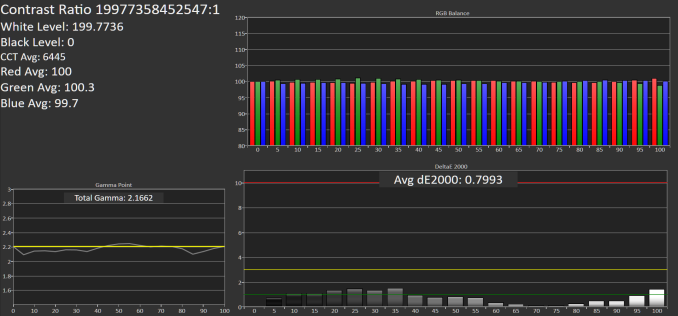
SpectraCal CalMAN
XS :
XSM:
In terms of greyscale accuracy, both the iPhone XS and iPhone XS Max present outstanding accuracy, coming in at an astonishing deltaE2000 of 0.79 for the XS and 1.64 for the XS Max. My Max unit seemed to lack intensity in the green channel, which reduced its accuracy score.
Both phones came in very close to the target 6500K of the D65 illumination point, in practice they’re very much perfect white.
Brightness wise, my XS maxed out at 646cd/m², while my XS Max came in at 668cd/m². There is no auto-brightness boost, however at such high brightness levels, there’s no need. Minimum brightness goes down to a little under 2 nits, allowing for comfortable night-time reading.


iPhone XS - iPhone XS Max
SpectraCal CalMAN
If one were to nit-pick, then it’s about the gamma measurement as the XS seemed to undershoot the 2.2 target, resulting in ever so slightly darker images, while my XS Max overshot it, resulting in brighter images. Still both were very much within imperceptible levels, so it’s not a great concern.
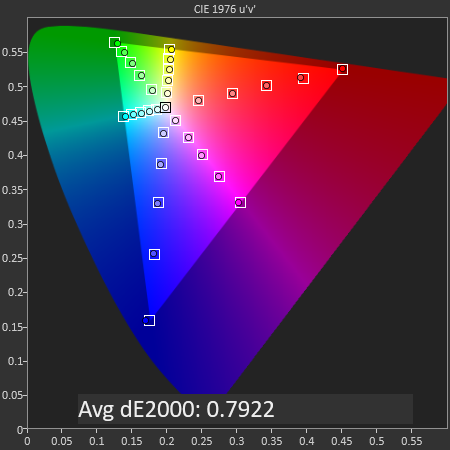
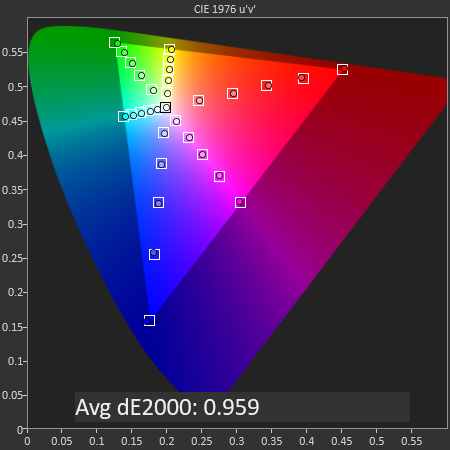
iPhone XS - iPhone XS Max
SpectraCal CalMAN
By default, the XS display and software interpret non-wide gamut tagged content as sRGB. Measuring the saturation accuracy here, we see some amazing results from both phones. The XS posted an amazing dE2000 of 0.79 – this is so low that it’s nigh-impossible to get much better, even when manually calibrating a display. The XS Max fared a bit worse at 0.95, but still below 1 which still deserves it the commendation of being excellently accurate.
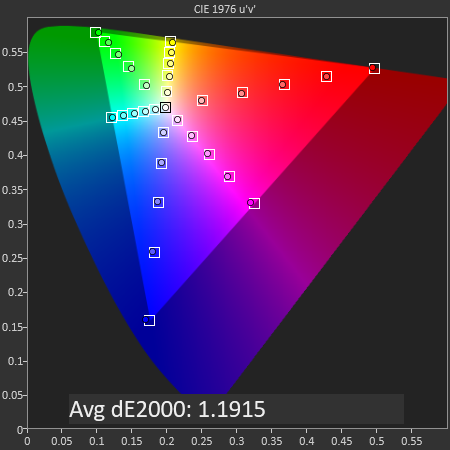
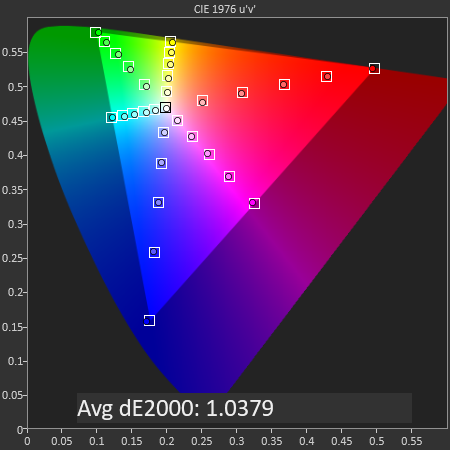
iPhone XS - iPhone XS Max
SpectraCal CalMAN
When the application supports it, and the media has a wide gamut profile embedded, the iPhone XS displays are able to showcase the higher colour intensities of this wider colour gamut. Apple pretty much standardised “Display P3” in the mobile world – a display mode with the gamut of DCI P3, yet with an identical gamma target of 2.2 of sRGB, ensuring seamless interoperability of both gamuts within a display.
Again, both the iPhone XS and the XS Max showcase outstanding calibration with respective dE2000 of 1.19 and 1.03.
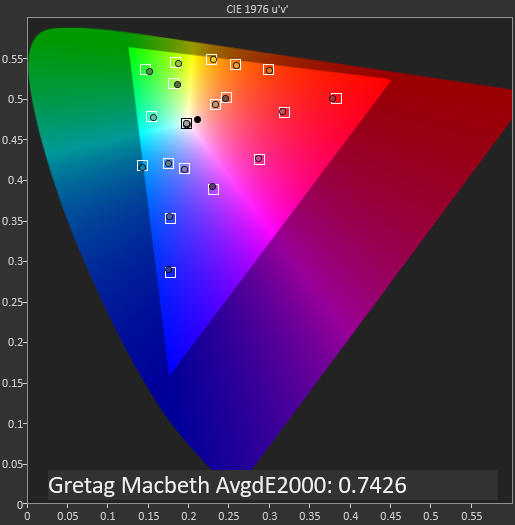
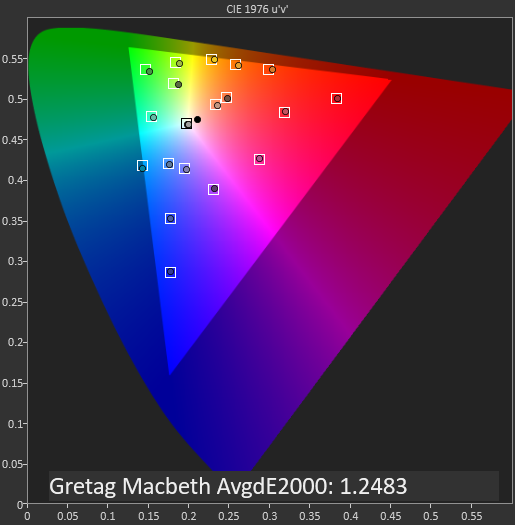
iPhone XS - iPhone XS Max
SpectraCal CalMAN


iPhone XS - iPhone XS Max
SpectraCal CalMAN
The Gretag Macbeth colour targets contain commonly encountered colours, such as skin tones and other colour samples. This test checks not only if the display is able to display the correct colour hue, but also the luminosity.
Again, the iPhones are able to show outstanding figures. The 0.74 score of the iPhone XS is I think the lowest figure we’ve measured on any kind of display, which is amazing. My XS Max figures scored a bit worse, it’s likely that the green channel weakness is part of what’s causing it to be better.
Overall, the iPhone displays are just outstanding. These are the best calibration results we’ve come to measure not only in a smartphone, but likely any display. I have literally nothing negative to say about them, and in terms of picture quality, they are just the best displays on the market.
Display Power
I was curious to see how the new XS fared against last year’s X – as it’s possible there might have been some under-the-hood improvements in terms of panel or emitter materials.
Unfortunately, it looks like the iPhone XS is nigh identical to the iPhone X when it comes to the power characteristics of the panel. My iPhone X had reached just a bit higher brightness and extended up the power curve a bit, but otherwise any differences can just as well be attributed to random manufacturing fluctuations.
| Screen Luminance Power Efficiency 100% APL / White @ 200nits |
||||||
| Device | Screen Luminance Power at 200cd/m² |
Luminance Power (mW) / Screen area (cm²) Efficiency |
||||
| LG G7 | 257 mW | 2.93 | ||||
| LG G6 | 363 mW | 4.43 | ||||
| P20 | 411 mW | 4.86 | ||||
| Galaxy S9 | 563 mW | 6.69 | ||||
| P20 Pro | 601 mW | 6.74 | ||||
| Galaxy S8 | 590 mW | 7.01 | ||||
| iPhone X | ~671 mW | ~8.31 | ||||
| iPhone XS | ~736 mW | ~9.11 | ||||
Comparing the power efficiency at 200cd/m² and normalising the luminance power of the devices for their screen area, we see that the iPhone X and XS fall a tad behind other Samsung OLED panels. I think what this could be attributed to is the 10-bit colour depth of the Apple phones, as their DDIC and the active matrix would need to do more work versus the 8-bit counterparts.
One thing to also very much to take into account is the base power consumption of the phones. The iPhone X, XS and XS Max all fluctuate around 480-500 mW when on a black screen, which is around 150mW more than the iPhone 8 LCD models. This might not sound much, but’s it’s an absolutely huge figure when taking into account that it’s an unavoidable power consumption of the phone whenever the screen is on. I do hope Samsung and Apple alike would be able to focus more on optimising this, as like we’re about to see, it will have an impact on battery life.


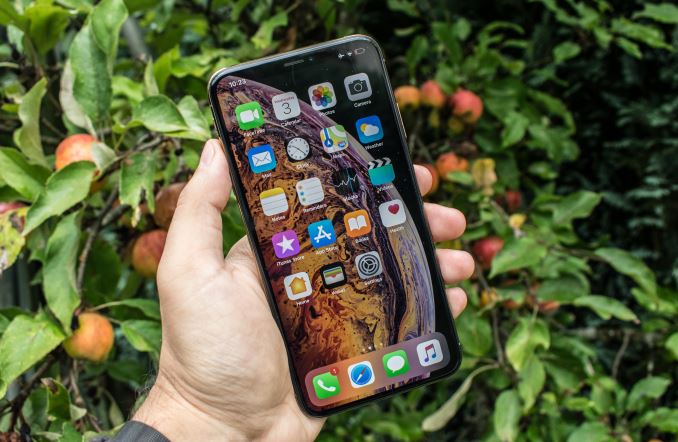
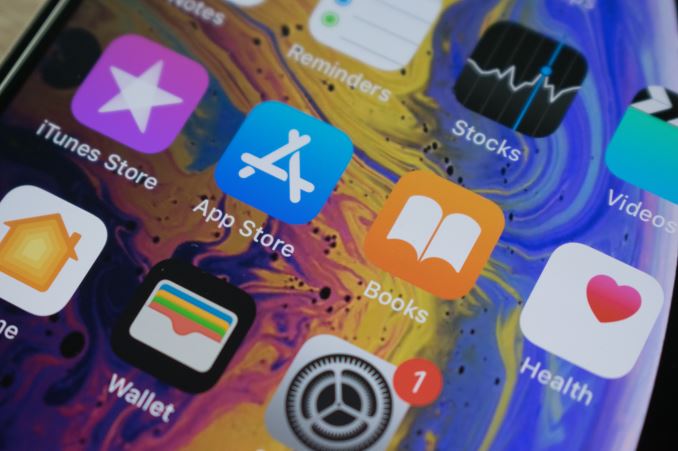
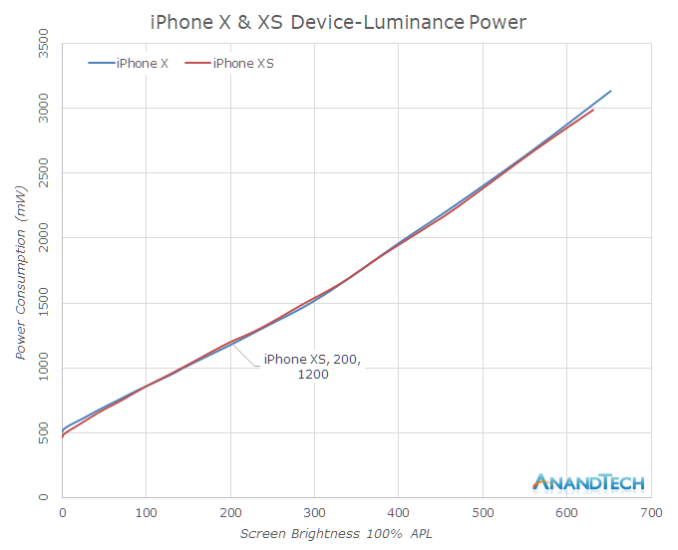








253 Comments
View All Comments
eastcoast_pete - Sunday, October 7, 2018 - link
Apple's strength (supremacy) in the performance of their SoCs really lies in the fine-tuned match of apps and especially low-level software that make good use of excellent hardware. What happens when that doesn't happen was outlined in detail by Andrei in his reviews of Samsung's Mongoose M3 SoC - to use a famous line from a movie that "could've been a contender", but really isn't. Apple's tight integration is the key factor that a more open ecosytem (Android) has a hard time matching; however, Google and (especially) Qualcomm leave a lot of possible performance improvements on the table by really poor collaboration; for example, GPU-assisted computing is AWOL for Android - not a smart move when you try to compete against Apple.varase - Tuesday, October 23, 2018 - link
I have serious doubts that Android would even run on an A12 SoC - I thought Apple trashed ARMv7 when it went to A11.Strafeb - Saturday, October 6, 2018 - link
It would be interesting to see comparison of screen efficiency of iPhone XR's low res LCD screen, and also some of LG's pOLED screens like in V40.Alistair - Saturday, October 6, 2018 - link
The Xeon Platinum 8176 is a 28 core, $9000 Intel server CPU, based on Skylake. In single threaded performance, the iPhone XS outperforms it by 12 percent for integers, despite its lower clock speed. If the iPhone were to run at 3.8ghz, the Apple A12 would outperform Intel's CPU by 64 percent on average for integer tests.iPhone XS and A12 numbers from: https://www.anandtech.com/show/13392/the-iphone-xs...
Xeon numbers from: https://www.anandtech.com/show/12694/assessing-cav...
spreadsheet: https://docs.google.com/spreadsheets/d/1ipKIh4i56o...
image of chart: https://i.imgur.com/IAupi9p.jpg
Think about that, the iPhone's CPU IPC (performance per clock) is already higher in integer performance now. Those tests include: spam filter, compression, compiling, vehicle scheduling, game ai, protein seq. analyses, chess, quantum simulation, video encoding, network sim, pathfinding, and xml processing. Test takes hours to run.
SanX - Saturday, October 6, 2018 - link
Yes, and while Apple and all other mobile processor manufacturers charge $5 per core, Intel $300yeeeeman - Saturday, October 6, 2018 - link
It might be faster in single thread, but in MT it gets toasted by the Xeon. The Xeon is 9000$ for a few reasons:- it is an enterprise chip;
- it supports ecc;
- it supports up to 8 cpus on a board;
- it supports tons of ram, a LOT of memory channels;
- it has almost 40MB of L3 cache, compared to 8mb in a12;
- it has a ring bus architecture meaning all those cores have very low latency between them and to memory;
- it has CISC instructions, meaning that when you get out of basic phone apps and you start doing scientific/database/HPC stuff, you will see a lot of benefits and performance improvements from executing a single instruction for a specific operation, compared to the RISC nature of A12;
- it supports AVX512, needed for high performance computing. In this, the A12 would get smashed;
- and many more;
So the Xeon 8180 is still an mighty impressive chip and Intel has invested some real thought and experience into making it. Things that Apple doesn't have.
I get it, it is nice to see Apple having a chip with this much compute power in such a low TDP and it is due to the fact that x86 chips have a lot of extra stuff added in for legacy. But don't get carried away with this, what Apple is doing now from uArch point of view is not new. Desktop chip have had this stuff 15 years ago. The difference is that Apple works on the latest fabrication process and doesn't care about x86 legacy.
Alistair - Saturday, October 6, 2018 - link
"It might be faster in single thread, but in MT it gets toasted by the Xeon"That is totally irrelevant. Obviously Apple could easily make a chip with more cores. Just like Cavium's Thunder. 8 x A12 Vortex cores would beat an 8 core Xeon in integer calculations easily enough.
eastcoast_pete - Sunday, October 7, 2018 - link
Agree on your points re. the XEON. However, I'd still like to see Apple launch CPUs/iGPUs based on their design especially in the laptop space, where Intel still rules and charges premium prices. If nothing else, Apple getting into that game would fan the flames under Intel's chair that AMD is trying to kindle (started to work for desktop CPUs). In the end, we all benefit if Chipzilla either gets off its enormous bottom(line) and innovates more, or gets pushed to the side by superior tech. So, even as a non-Apple user: go Apple, go!Constructor - Sunday, October 7, 2018 - link
CISC instructions generally don't really do much more than RISC ones do – they just have more addressing modes while RISC is almost always register-to-register with separate Load & Store.
That just doesn' make any difference any more because the bottleneck is not instruction fetching (as it once was in the old times) but actually execution unit pipeline congestion, including of the Load & Store units.
There's already a scalable vector extention for ARM which Apple could adopt if that was actually a bottleneck. And even the existing vector units aren't anything to scoff at – the issue is more that Intel CPUs are forced to drop down to half their nominal clock once you actually use AVX512; It could actually be more efficient to optimize the regular vetor units for ful lspeed operation to make up for it.
We actually have no clue what Apple is investing in behind closed doors until they slam it on the table as a finished product ready for sale!
tipoo - Thursday, October 18, 2018 - link
I'm hoping Apple takes the ARM switch as an opportunity to bring an ARM AVX-512 equivalent down to more products, like the iMac.